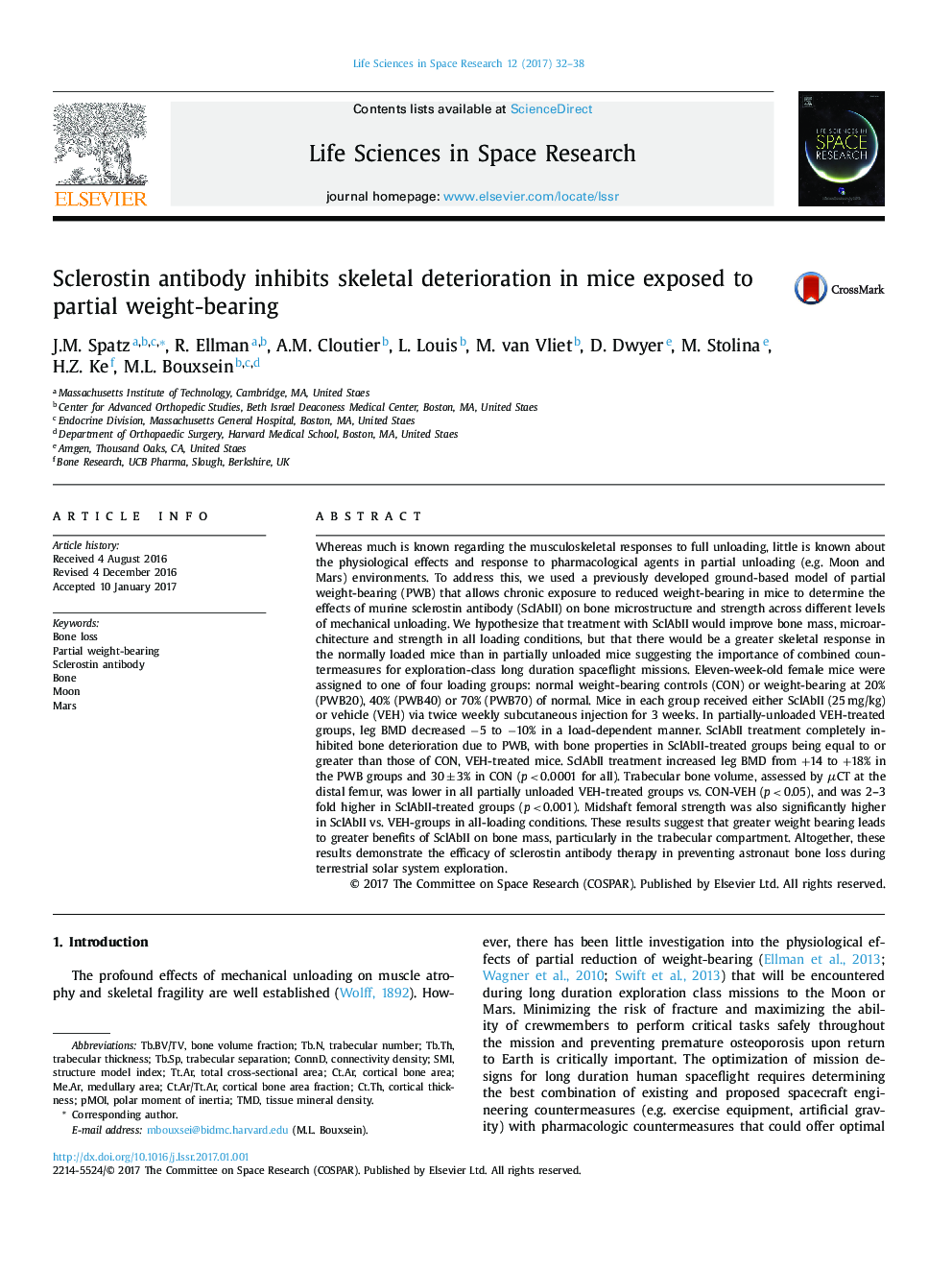| کد مقاله | کد نشریه | سال انتشار | مقاله انگلیسی | نسخه تمام متن |
|---|---|---|---|---|
| 5498090 | 1533312 | 2017 | 7 صفحه PDF | دانلود رایگان |
عنوان انگلیسی مقاله ISI
Sclerostin antibody inhibits skeletal deterioration in mice exposed to partial weight-bearing
ترجمه فارسی عنوان
آنتیبادی اسکلروستین باعث کاهش وخامت اسکلرستین در موشهای در معرض وزن نسبی جزئی می شود
دانلود مقاله + سفارش ترجمه
دانلود مقاله ISI انگلیسی
رایگان برای ایرانیان
کلمات کلیدی
Ct.ArCt.Ar/Tt.ArTt.ArCt.ThTMDSMITb.NTb.SpTb.ThPartial weight-bearingSclerostin antibody - آنتیبادی اسکلروستینBone loss - از دست دادن استخوانBone - استخوان connectivity density - تراکم اتصالTissue mineral density - تراکم مواد معدنیtrabecular separation - جداسازی ترابکولارMars - سیاره مریخStructure model index - شاخص ساختار مدلtrabecular number - شماره تراککالtrabecular thickness - ضخامت تراککالcortical thickness - ضخامت قشرpolar moment of inertia - لحظه قطبی اینرسیMoon - ماهCortical bone area - منطقه استخوان کورتیکBone volume fraction - کسر حجم استخوانtotal cross-sectional area - کل سطح مقطع عرضی
موضوعات مرتبط
مهندسی و علوم پایه
علوم زمین و سیارات
علوم فضا و نجوم
چکیده انگلیسی
Whereas much is known regarding the musculoskeletal responses to full unloading, little is known about the physiological effects and response to pharmacological agents in partial unloading (e.g. Moon and Mars) environments. To address this, we used a previously developed ground-based model of partial weight-bearing (PWB) that allows chronic exposure to reduced weight-bearing in mice to determine the effects of murine sclerostin antibody (SclAbII) on bone microstructure and strength across different levels of mechanical unloading. We hypothesize that treatment with SclAbII would improve bone mass, microarchitecture and strength in all loading conditions, but that there would be a greater skeletal response in the normally loaded mice than in partially unloaded mice suggesting the importance of combined countermeasures for exploration-class long duration spaceflight missions. Eleven-week-old female mice were assigned to one of four loading groups: normal weight-bearing controls (CON) or weight-bearing at 20% (PWB20), 40% (PWB40) or 70% (PWB70) of normal. Mice in each group received either SclAbII (25 mg/kg) or vehicle (VEH) via twice weekly subcutaneous injection for 3 weeks. In partially-unloaded VEH-treated groups, leg BMD decreased â5 to â10% in a load-dependent manner. SclAbII treatment completely inhibited bone deterioration due to PWB, with bone properties in SclAbII-treated groups being equal to or greater than those of CON, VEH-treated mice. SclAbII treatment increased leg BMD from +14 to +18% in the PWB groups and 30â±â3% in CON (p <â0.0001 for all). Trabecular bone volume, assessed by μCT at the distal femur, was lower in all partially unloaded VEH-treated groups vs. CON-VEH (p <â0.05), and was 2-3 fold higher in SclAbII-treated groups (p <â0.001). Midshaft femoral strength was also significantly higher in SclAbII vs. VEH-groups in all-loading conditions. These results suggest that greater weight bearing leads to greater benefits of SclAbII on bone mass, particularly in the trabecular compartment. Altogether, these results demonstrate the efficacy of sclerostin antibody therapy in preventing astronaut bone loss during terrestrial solar system exploration.
ناشر
Database: Elsevier - ScienceDirect (ساینس دایرکت)
Journal: Life Sciences in Space Research - Volume 12, February 2017, Pages 32-38
Journal: Life Sciences in Space Research - Volume 12, February 2017, Pages 32-38
نویسندگان
J.M. Spatz, R. Ellman, A.M. Cloutier, L. Louis, M. van Vliet, D. Dwyer, M. Stolina, H.Z. Ke, M.L. Bouxsein,
